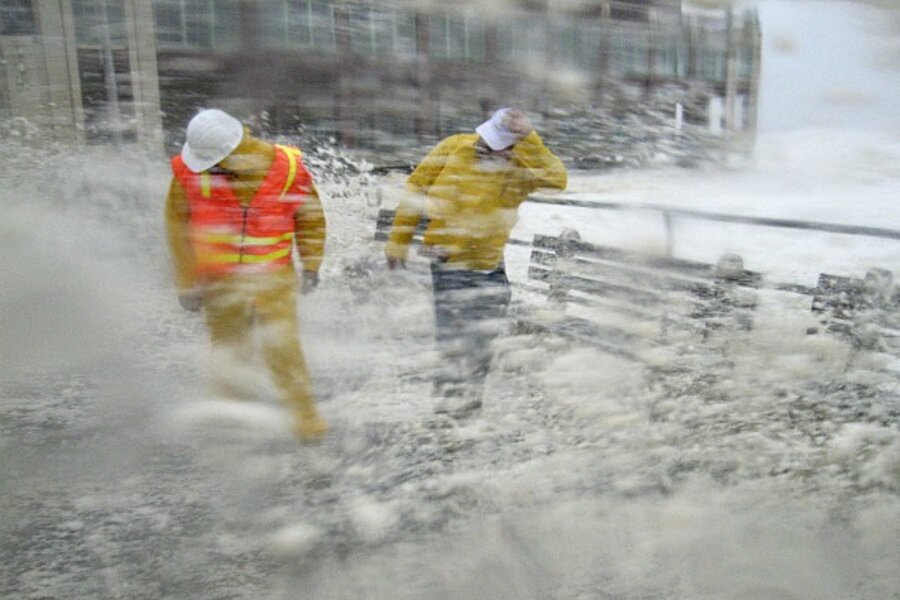Hurricane Irene update: Irene downgraded from hurricane to tropical storm
Loading...
Irene has been downgraded from a Category 1 hurricane to a tropical storm with sustained winds of 65 miles per hour gusting to 75 mph.
But Irene’s weakening is no reason for complacency, meteorologists and government officials say.
Major flooding is expected well inland across the Northeast, with several large rivers likely to remain above flood stage for days, predicts meteorologist Bill Deger at AccuWeather.com. Records could be approached on a few rivers, he says, rivaling those recorded during hurricane Floyd in 1999.
“Rainfall totals will continue to be excessive and impressive. Many areas from the mid-Atlantic into New England will get 3 to 6 inches of rain, with localized amounts above a foot,” he writes. “While flooding along streets and in low-lying areas will be worse in the interim, river flooding will worsen in the hours and days after the rain stops falling. The Schuylkill River in southeastern Pennsylvania, the Passaic River in northern New Jersey and the Winooski River in northern New England are among the waterways that will likely experience major flooding.”
The Federal Emergency Management Agency says Irene’s change in storm designation shouldn’t change the way individuals and businesses prepare and respond.
[ Video is no longer available. ]
“Even though Irene is now a tropical storm, it is critical that residents and businesses continue to listen to the instructions of their local officials and closely follow news and weather reports,” FEMA says on its website. “Tropical storms still bring high sustained winds, heavy rains, and can cause dangerous conditions and flash flooding.”
Among the agency’s recommendations:
• Stay away from downed power lines, flooded roadways and fallen tree limbs.
• If your area has lost, or may lose, electricity, remember to never use portable generators indoors or in garages, basements or sheds. The exhaust from generators contains high levels of carbon monoxide that can quickly incapacitate and kill.
• Don’t drive or walk through flooded areas. The reason that so many people drown during flooding is because few of them realize the incredible power of water. A mere six inches of fast-moving flood water can knock over an adult. It takes only two feet of rushing water to carry away most vehicles – this includes pickups and SUVs.
• If you have evacuated, don’t return home until the all clear is given by local officials. There may be hazards that prevent you from being able to return home such as downed power lines, road closures, roads or bridges that are impassable, and traffic lights not working.





